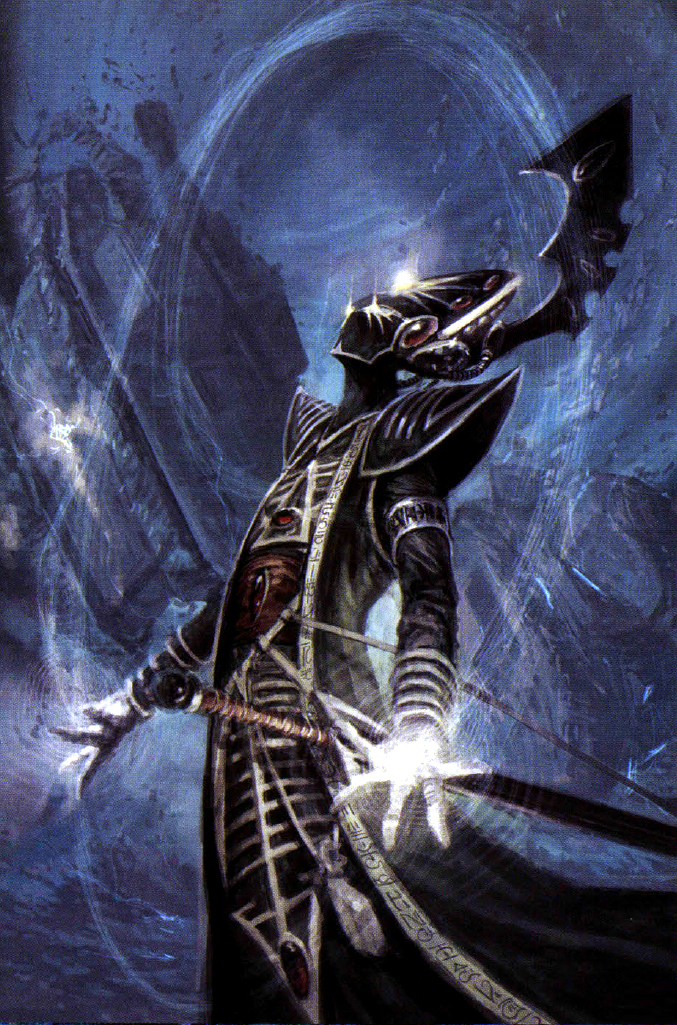 Greetings gentlereaders,
Greetings gentlereaders,
Thinking how valuable stat points are and how this influences game design and it got me to thinking. In a lot of places we have rules that act as artificial statistics, specifically I'd like to talk about re-rolls, how they've popped up in 40k and what that can tell us about the value of different statistics. Broadly speaking, we can group rolls into three categories: saves, shooting attacks and melee attacks. I'll not discuss re-rolls to wound, as they fall into one of the other categories and can vary in value much more than the other three. This one will be much more evidence-based than statistics based, so don't be afraid to come with me.
Let's start with the most prevalent and to my knowledge, oldest re-roll type: melee re-rolls. The most iconic example of this type of re-roll, and arguably of all 40k, is the chaplain. Their signature rule is that they and their unit re-roll failed to hits on the charge. First thing I notice is that it's a non-optional rule, it doesn't say may and it tells you specifically when you get the benefit. Admittedly, it's the only round of combat you're guaranteed if you get into close combat so it is advantageous to use your buff when you know you can. All in all, this type of buff is pretty ancient and isn't quite the 5th edition Preferred Enemy that made Godfrey's Templar the most accurate close combat fighters in the game. When you're looking at a 75 or 89% accuracy when most units are looking at 50% or 67%, you're doing pretty darn good at hitting. Melee re-rolls can produce some extremely theatrical moments, but require you to get to grips with your opponent to have any effect. Unless you're really fast, this edition hasn't been kind to assault re-rolls.
 |
| Oh yes, the gun is good. |
 The last type of re-roll, and possibly the rarest type of re-roll, is re-rolling a save. Until the (first) daemons codex, the most prominent re-rollable save was given by by the eldar power Fortune. Brother Corbulo can get a one-off re-roll, but I've rarely enough seen him run (and when dramatt did, he failed his land raider failed its dangerous terrain after the re-roll). The old daemons codex created the fatecrusher list that gave so many people headaches. Now we get to deal with its successor and peer in ScreamerStar and the updated Warlock Council. It's the only type of re-roll that isn't able to kill anything, but I'll argue that it's both the strongest and therefore most problematic re-roll type in the game.
The last type of re-roll, and possibly the rarest type of re-roll, is re-rolling a save. Until the (first) daemons codex, the most prominent re-rollable save was given by by the eldar power Fortune. Brother Corbulo can get a one-off re-roll, but I've rarely enough seen him run (and when dramatt did, he failed his land raider failed its dangerous terrain after the re-roll). The old daemons codex created the fatecrusher list that gave so many people headaches. Now we get to deal with its successor and peer in ScreamerStar and the updated Warlock Council. It's the only type of re-roll that isn't able to kill anything, but I'll argue that it's both the strongest and therefore most problematic re-roll type in the game.The strength of re-rolling saves (especially in two cases) comes from two factors that the other two types of re-rolls don't have. The first factor is non-specificity. When you use offensive re-rolls you must pick a target and may only shoot that target. Defensive re-rolls may be used against any unit that shoots the protected unit until either the duration ends or the unit dies. Sometimes the protected unit can be hit with a weapon that evades the re-roll by not allowing any saves the protected unit is hit with, but that's something I'll discuss more in the problems section. Defensive re-rolls do not force you to use them once and then they end, nor are they limited to effecting one interaction between two units. The second reason for defensive re-rolls being strong is their non-interactivity. It seems that some of the best rules in 40k are made to prevent interaction with other rules or your opponent. ATSKNF prevents sweeping advance contests, fear tests, and falling back off the table. Veil of Tears attempts to prevent opponents from shooting at harlequins. The ironic thing about defensive re-rolls is that they can work best by making a unit appear unkillable and diverting fire away from it and thus, never being used. Add to this the fact that the sources of ScreamerStar and the Warlock Council's re-rolls are a piece of wargear and a blessing, things that can't be stopped by opponents, except in rare occasions. This non-interactivity means that these buffs are almost given as parts of playing against these lists.
Hopefully this synopsis of how granting different re-rolls have differing levels of effectiveness has helped spark some thought as to how the game is designed. Hopefully, I can write up one article a week, but I'm not sure I can find enough games to keep having content or provoking my own thoughts on 40k, but I will try. If there's anything you would like me to look into, please let me know.
Heretic.

No comments:
Post a Comment